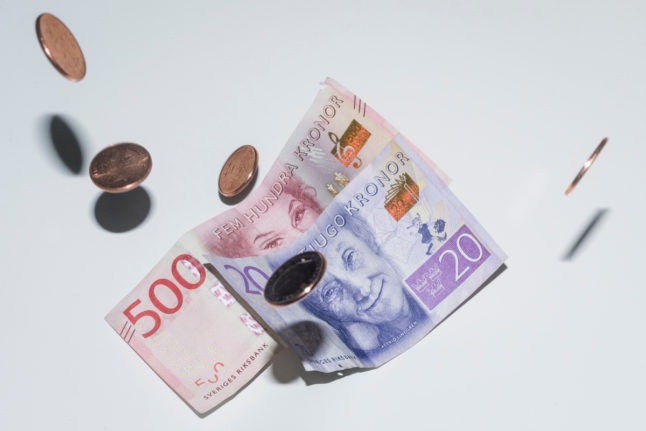This year’s prize sum, 11 million kronor, gets you just under a million dollars. That’s less than two decades ago, when the prize sum was worth almost 1.3 million dollars, despite winners receiving a million kronor less than in 2023.
This isn’t the first year where the prize has been worth less for researchers based in the US, who are usually in the majority. Over the last few years, the prize sum has dipped under the million-dollar mark multiple times. Since 2000, it was lowest in 2016, when it was only around 870,000 dollars.
Despite the effect of the currency’s strength on the value of the prize, the Nobel Foundation is not planning on awarding the prize in another currency.
“In the management of its capital, the Nobel Foundation spreads its risks by investing in different currencies, but the possibility of awarding the prize in a different currency than the Swedish krona has not been considered,” Nobel Foundation press officer Annika Pontikis told TT newswire.
EXPLAINED:
The decision to raise the sum by a million kronor this year is, according to the foundation, due to the fact that there is “financial capacity” to do so.
At the end of last year, the fund was worth 5.8 billion kronor, which is invested in both shares and property, among other things, in order to ensure as high returns as possible.
The Foundation’s finances haven’t always been this good, however. In 2012, the cash prize was slashed from 10 to eight million kronor, as part of a savings programme, with it only reaching 10 million kronor again in 2020. During some of the years in between, the prize was still worth more in dollars compared to now, like in 2013 where it was worth over 1.3 million.
The Nobel Foundation aims to increase the value of the cash sum in the future, in part to ensure that the Nobel prize remains competitive with other prizes. However, Pontikis would not give more details on how much higher it will be, or when a possible increase could occur.
“A new assessment of the situation is made every year, and it is therefore not possible to comment on possible future increases today.”
Facts and figures: The history of the Nobel cash prize
1975: 630,000 kronor, equivalent to around 143,000 US dollars (worth around 4,032,000 kronor today)
1980: 880,000 kronor, equivalent to around 200,000 US dollars (worth around 3,573,000 kronor today)
1985: 1,800,000 kronor, equivalent to around 234,000 US dollars (worth around 4,653,000 kronor today)
1990: 4,000,000 kronor, equivalent to around 712,000 US dollars (worth around 7,815,000 kronor today)
1995: 7,200,000 kronor, equivalent to around 1,084,000 US dollars (worth around 1,422,000 kronor today)
2000: 9,000,000 kronor, equivalent to around 932,000 US dollars (worth around 13,923,000 kronor today)
2005: 10,000,000 kronor, equivalent to around 1,258,000 US dollars (worth around 14,411,000 kronor today)
2010: 10,000,000 kronor, equivalent to around 1,460,000 US dollars (worth around 13,152,000 kronor today)
2015: 8,000,000 kronor, equivalent to around 941,000 US dollars (worth around 10,338,000 kronor today)
2020: 10,000,000 kronor, equivalent to around 1,196,000 US dollars (worth around 11,966,000 kronor today)
2023: 11,000,000 kronor, equivalent to around 1,000,000 US dollars (on September 28th)
Source: Nobel Foundation, Poundsterlinglive.com, Ekonomifakta



 Please whitelist us to continue reading.
Please whitelist us to continue reading.
Member comments